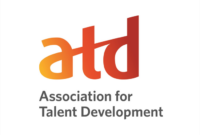Hubbard Radio Washington DC, LLC. All rights reserved. This website is not intended for users located within the European Economic Area.
On Air: Federal News Network

Addressing and closing critical skills gaps in the federal workforce
On Demand
How do you know if you have skills gaps in your agency and how can you address them?
As agencies continue to face governmentwide gaps in their workforce’s skills, the Office of Personnel Management is firing on all cylinders to try to both identify and address those challenges in staff expertise.
For Jason Barke, OPM’s deputy associate director of strategic workforce planning, meeting those challenges requires a combination of assessing the situation, and then planning a route of action. The approach to closing skills gaps can vary by the type of position, or even by the individual agency.
“If an agency has big gaps in a staffing target, they don’t have the people on board to be able to meet mission delivery — and we would make some pretty broad assumptions there that they don’t have the skills in place if they’re missing large gaps of their workforce,” Barke said in an interview. “That’s one big way that agencies can work to close skills gaps — when they do have a vacancy, really take a good look at that position description, make sure that we are current, that we haven’t had new skills that come in that we need to hire for, making sure that aligns with their strategic plan and what they’re trying to hire for.”
In government, skills gaps can stem from an agency either not having the right expertise on staff, or simply not having enough employees in the first place. Many agencies face gaps specific to their own workplace, but OPM has also identified three current mission-critical areas where skills gaps exist across government. Those areas are human resources, acquisition and cybersecurity.
The importance of upskilling
If skills gaps come from not having the right expertise, then upskilling is an important piece of the solution, Barke said. It’s about making sure that agencies can understand where there are gaps, and train employees in the skills they both need and desire.
Barke said career pathing tools that connect different types of roles, and suggest how employees can transfer or build skills, would be especially useful.
“That’s what we’d like to start seeing, especially as the workforce evolves and we need people in some of these different areas,” Barke said. “Making sure that we have a good career path laid out with how they can continue working towards that.”
Additionally, with a clear correlation between development opportunities and workforce retention, there is a need for agencies to consider both factors in their long-term strategic workforce planning.
“There are questions around, do employees feel they’re getting the training they need? Do they feel that their office has the skills? Does their manager support their development? And if we’re starting to see low numbers there, I think that’s where we probably want to start thinking about their intent to stay,” Barke said.
On the other hand, if a skills gap stems from simply not having enough staff, Barke said agencies need to plan properly when determining how many hires they want to make in a fiscal year. In that process, it’s crucial to consider any staff attrition — including retirements — to ensure that the workforce planning and projection is as accurate as possible, and so agencies can plan recruitment accordingly.
“Sometimes what we see [at agencies] is they’ll say, ‘I have 100 people currently in this occupation, I need have 200 at the end of the year, so I want to hire 100,’” Barke said. “When in reality, you’re going to have attrition that’s going to come in there, there are other things are going to pop up. So we really want to start thinking about, what is that true gap that we have, how do we go about filling that, and what are the vulnerabilities there?”
Looking at skills for the long term
Agencies also have a new resource from OPM, called the Workforce of the Future playbook, which shares tips and promising practices from agencies on how to upskill and initiate long-term workforce planning for the staff agencies will need in the long run.
“That’s how we start thinking about how we really help employees grow, and make sure they have that path to get to the next level,” Barke said. “And then, how are we supporting agencies when we do need those skills? How do we ensure that we’re able to develop those employees to be able to move along as that work shifts?”
Additionally, Barke said agencies should be developing individual development plans which should support the employee’s perspective and what types of growth or skills development they’re personally looking for in their careers. It’s especially key for workforce retention. If employees see a future for themselves with an agency and the ability to grow in their position, they are often more likely to stay in a job.
“Sometimes they’ve reached a plateau; they’re not sure the direction that they can go,” Barke said. “So if we have these good processes, these skills and strategies in place, they can say, ‘OK, I may have reached where I want to go in this occupation, but I do see a career path forward, I do see that I could follow this path, take these classes, this training, these accreditations — that may help me get to that different area so I can continue to progress.”
Learning Objectives:
- Assessing your workforce
- Different types of skills gaps
- How to develop employees as needs shift
- Industry analysis
By providing your contact information to us, you agree: (i) to receive promotional and/or news alerts via email from Federal News Network and our third party partners, (ii) that we may share your information with our third party partners who provide products and services that may be of interest to you and (iii) that you are not located within the European Economic Area.
Please register using the form on this page.
Have questions or need help? Visit our Q&A page for answers to common questions or to reach a member of our team.
Speakers
By providing your contact information to us, you agree: (i) to receive promotional and/or news alerts via email from Federal News Network and our third party partners, (ii) that we may share your information with our third party partners who provide products and services that may be of interest to you and (iii) that you are not located within the European Economic Area.





